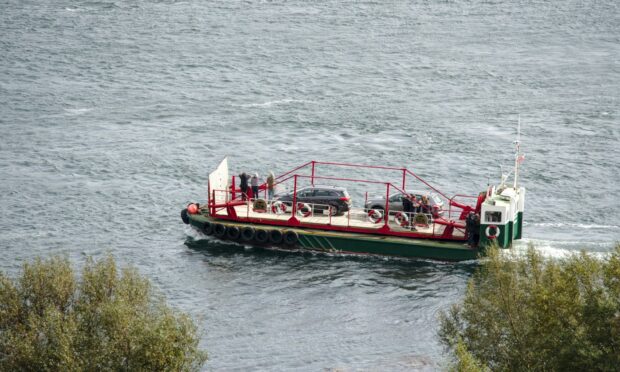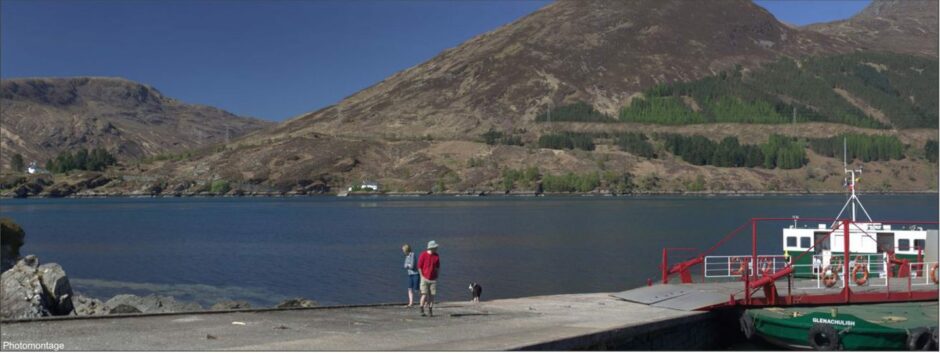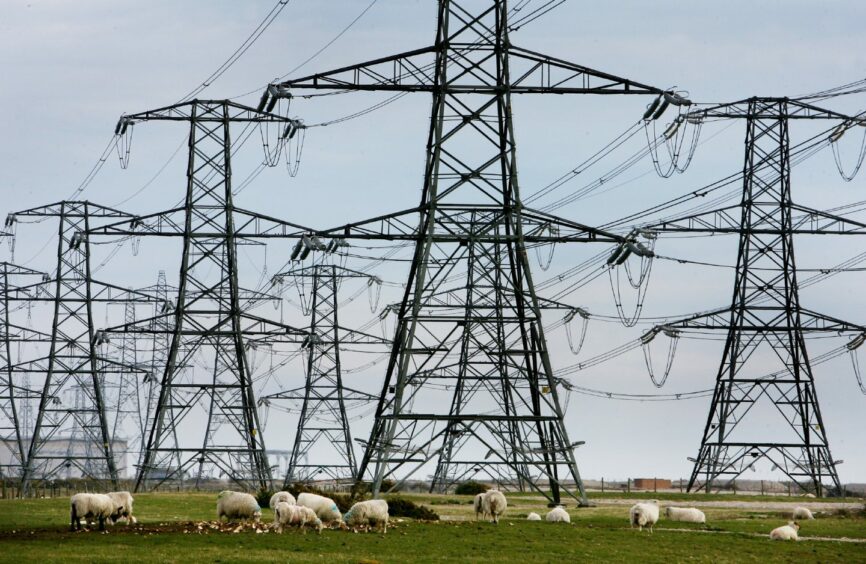Operators of the world’s last remaining turntable ferry have launched a petition over plans to relocate more than a dozen pylons.
Scottish and Southern Electricity Networks (SSEN) has outlined blueprints to install 15 new super pylons near Kyler Rhea in the south of Skye.
The venture forms part of their £480 million project to replace the existing power lines from Ardmore on Skye to Fort Augustus.
Siting pylons along Kyler Rhea Glen would deviate from the existing route north of Kylerhea village, coming into contact with MV Glenachulish, the original Glenelg to Skye car ferry.
SSEN confirmed in a statement today that this route was not their preferred option.
Petition launched by operators of Glenelg to Skye ferry
Jo Crawford, general manager of Isle of Skye Ferry Community Interest Company – owners and operators of the ferry – launched an online petition this week opposing the plans.
In just 72 hours, more than 1,500 people have signed the petition.
Ms Crawford says they fully support the upgrades being proposed by SSEN.
However, she fears relocating the pylons could be “catastrophic” for their tourism trade.
She said: “The ferry company is not objecting to the upgrades of the pylons and the whole system; not in any way at all.
“What we are asking people to object to is the proposed route of the pylons, coming right across the front of where the ferry crosses and up the Kyler Rhea Glen.
“There is an existing route that the pylons follow already. It doesn’t impact any small local businesses and it doesn’t impact any residents either so the existing route is the simpler, less complicated option, whereas siting them right the way along here would be catastrophic, I think.”
She added: “I think that people would stop coming in significant numbers, which would have an impact on the sustainability of the ferry operations and therefore, the employment for local people it provides.
“We provide employment for 10% of the working-age population in this small community which is no small thing.
“Visitors provide our bread and butter so if people don’t come, we won’t be able to continue. It really is just as simple as that.”
Ferry operators question the sense of diverting the route
SEEN’s preferred route would follow the existing overhead line and head south near Loch Alsh to the existing crossing point, utilising the existing towers north of Kylerhea village.
The alternative option, being lodged by SSEN, follows a more southern route down the Glen Arroch road to the glen towards Kylerhea, traversing the hillside above the village and the ferry terminal. It would then head north through woodland to the existing overhead line’s crossing point over the Kylerhea.
Consultations were previously held by SSEN bosses in both Skeabost and Broadford to garner public feedback on the plans.
In March, Highland councillors said they would not object to plans for the upgrades on Skye.
Ms Crawford says she “questions the sense” of the alternative route, fearing the detrimental impact it could have.
“Once all the pylons on this route are replaced, the older pylons must be removed, so they are going to have to go in about the old ones and take them all down,” she said.
“That means putting in new roads and access tracks.
“Why would you do that in two places when you can just do it in one and why would you choose this particularly special and historic place to do it in when it provides such important employment and community support.”
Maintaining ‘reliability’ in area
A spokesman for SSEN Transmission explained the existing overhead line from Fort Augustus to Skye is fast reaching the end of its operational life.
A recent fault resulted in the temporary loss of power to more than 20,000 customers along its route and in the Western Isles, which is supplied by two subsea cables from north Skye.
He said: “Our preferred route, which is also supported by the Kylerhea community and the Highland and Council, continues to be option 3A, which broadly follows the existing overhead line and will result in less visual and landscape impacts on the local community, avoiding impacts on the Glenelg-Skye ferry.
“Following the Highland Council’s decision to support our section 37 application earlier this year, we now look forward to the Scottish Government’s determination of our application.
“As a stakeholder-led business, we remain committed to working constructively with the local community and all stakeholders to ensure the timely delivery of this critical national infrastructure, which is essential to keep to keep the lights on and support the transition to net zero.”


